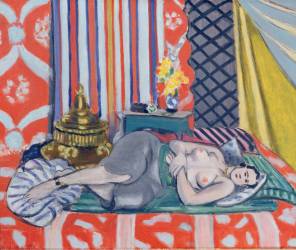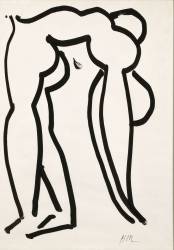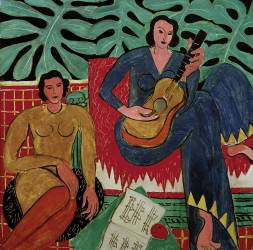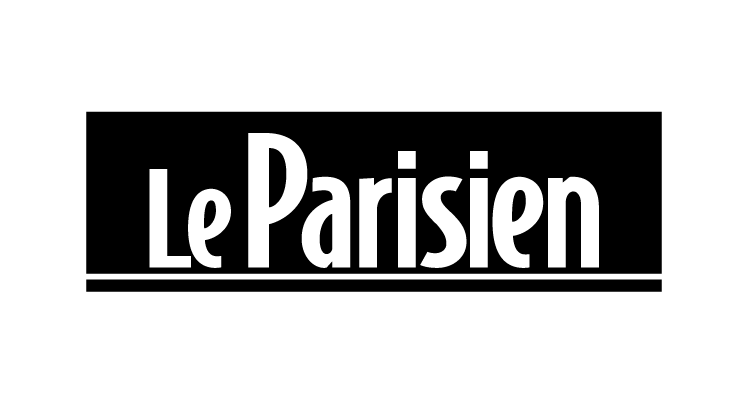Artwork of Henri Matisse
A leader of Fauvism, Henri Matisse is one of the major artists of modern art. Considered the man who "liberated color", the French painter is also an engraver, textile designer, sculptor and ceramist.Discover the artist's works available in the catalog, including his famous "Nu bleu III", or his latest masterpiece "La Tristesse du roi", both created using the cut-paper technique, of which Matisse was the precursor.Bring color to your home with Art de Matisse reproductions.
Henri Matisse biography: everything you need to know about this Fauvist painter
Matisse's bright future... or almost
Henri Matisse was born on December 31, 1869 in Cateau-Cambrésis, northern France, into a family of grain merchants, a profession he should have followed in his father's footsteps. After studying at a law school, he was destined for a career as a notary clerk in Saint-Quentin, more in keeping with his frail health. However, one event turned his life upside down: an attack of appendicitis forced him to remain bedridden for many weeks at the age of 20. To overcome his boredom, Henri Matisse asked his mother for a box of colors. In his Memoirs, he wrote: "From the moment I had this box of colors in my hands, I felt that this was where my life was". Matisse's first work was a reproduction of the image inside his box of colors, which he called "Essitam".
He then moved to Paris, where he enrolled in Gustave Moreau's studio in 1895. This art education taught him a great deal: in particular, not to focus on technical virtuosity, but rather on feeling. A year later, Henri Matisse exhibited his work for the first time at various salons.
The beginnings of Fauvism, or how Henri Matisse was inspired by criticism
At the Salon d'Automne in 1905, Matisse's career was turned upside down: several of his paintings were hung in the same room as those by Derain, Marquet and Vlaminck, and art critic Louis Vauxcelles dubbed the room the "cage aux fauves" (the cage of the wild beasts), because of the bright, vivid colors (such as red, yellow, pink and blue) used by the painters, which caused a scandal. The painters seized on this name to their advantage, and founded the artistic movement of Fauvism.
Henri Matisse subsequently met with success, both with art dealers (he was exhibited at the Bernheim gallery) and collectors. He caught the eye of writer Gertrude Stein, who bought several of his paintings and introduced him to a number of artists, including Picasso, with whom he maintained a lifelong half-friendship.
In 1922, Matisse received institutional recognition when a French museum bought his first painting, "Odalisque à la culotte Rouge" (Odalisque with Red Panties), a recurrent and much-worked-on subject during Matisse's period in Nice.
In 1908, Henri Matisse set up a painting academy that attracted a large number of students. He taught students from all over the world. And in 1909, Chtchoukine commissioned two paintings from him, "La Danse" and "La Musique", for his private collection. He described his painting "La Musique" in terms that would become the criteria for Fauvism: "A particular sign, the color was proportionate to the form. The form modified itself according to the reactions of its colored neighbors. For expression comes from the colored surface, which the viewer grasps in its entirety."
Chtchoukine (1854-1936), a visionary Russian industrialist and patron of the arts, collected the greatest French artists of modern art, including forty-one paintings by Matisse. In 1948, on Stalin's orders, this collection was divided between the Pushkin Museum in Moscow and the Hermitage Museum in St. Petersburg.
Matisse the traveller: where does he draw his inspiration from?
Matisse was a great traveler. Born in northern France, he lived for many years between Paris and Corsica, before settling permanently in Nice after the Second World War. Henri Matisse gained worldwide recognition, with exhibitions in Russia, England, Germany and the United States, as well as trips to Andalusia and the Maghreb. In the early '30s, while in the United States to exhibit, Henri Matisse met Albert Barnes, a collector, who commissioned a monumental work, "La Danse". The painter himself hung it in 1933 at the Barnes Foundation in Philadelphia.
But it was his trip to Tahiti that was to exert a major influence on his art: several years after his stay on the island, he drew on his experience to add the well-known exotic plant forms to his works.
It is often said that it was Matisse, and more broadly the Fauvists, who "liberated color" in art. On this subject, and concerning his artistic approach, the painter expressed himself in 1948 in these words: "I'd like people to know that you shouldn't approach color like you'd enter a mill, that you need a severe preparation to be worthy of it. But above all, one must possess the gift of color as a singer must possess the voice. [...] A colorist makes his mark even on a simple charcoal drawing."
Who are the painter's children?
Henri Matisse had three children with two different women. In 1894, Marguerite was born, the daughter of the painter and his then wife (and model), Caroline Joblaud. During the Second World War, Marguerite was sentenced to six months' imprisonment for acts of Resistance, where she was tortured. She left prison disfigured, and Matisse painted many portraits of her from this period, shocked to see his daughter in such a state.
The painter's other two children, Jean and Pierre, were born in 1899 and 1900. Their mother was Amélie Parayre, whom Matisse had married a year before the children were born. Amélie was also interned for six months in 1944. Jean became a sculptor, and also belonged to an active resistance network. As for Pierre, he became a well-known art dealer. He even opened an art gallery in New York, where artists such as Chagall, Dubuffet, Calder... and of course his own father, were exhibited.
Matisse: precursor of the "papier découpé" technique
En 1941, on diagnostique au peintre un cancer du côlon. Alors qu’on lui donnait six mois à vivre, l’opération se passe bien et Matisse survit. Il ne peut cependant pas rester debout, et en sort très faible. Commence alors sa célèbre série « Jazz », où Henri Matisse utilise la méthode de la gouache découpée, aussi appelée papier découpé, inventée par lui-même : alité, il ne peut plus diluer les couleurs et donc utiliser des types de peintures comme la peinture à l’huile. Ainsi, des papiers gouachés sont ensuite découpés puis placés et collés sur la toile.
En 1945 a lieu une rétrospective sur son travail au Salon d’automne (après celle de Picasso en 44 et de Georges Braque en 43) à laquelle il participe. Il sera même lauréat de la 25ème Biennale de Venise, à l’âge de 81 ans. Il réalise sa dernière toile, « La tristesse du roi », dans sa chambre d’hôtel / atelier à Nice en 1952, année d’ouverture du Musée Matisse dans sa ville natale, au Cateau-Cambrésis. Mais sa toute dernière œuvre est un dessin, le portrait de Lydia Délectorskaya, sa modèle et assistante, la veille de sa mort. Henri Matisse meurt le 3 novembre 1954 à l’âge de 84 ans.
Les œuvres de l’artiste sont aujourd’hui particulièrement visibles au Musée Matisse à Nice, dans la collection du Centre Georges-Pompidou de Paris, au Muséum national d'Art moderne et au Musée Matisse du Cateau-Cambrésis.
Learn more about the life and the works of Henri Matisse.












































































































